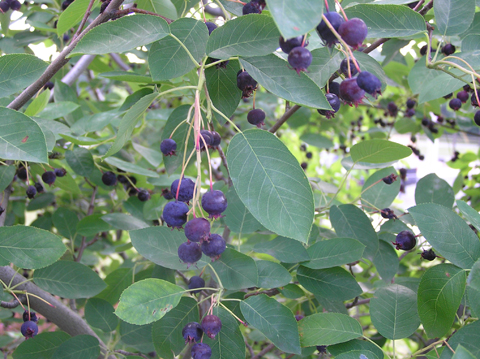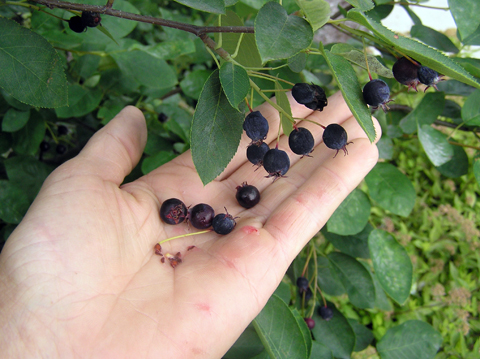 |
| Home | Ordering By Mail | Purchase Manual: Using Native Plants in Urban Landscapes |
|
|||||
Species Name: Amelanchier arborea
Common Name: Serviceberry
Zone: 4 to 9
Distribution: Maine and southern Quebec south to Georgia.
Seed collection: Fruit matures in New York State the last week in June through the first week in July. Collect fruit as soon as it ripens, as birds will quickly consume every last fruit. Each fruit contains 2 to 5 small brown seeds. Fruits are edible and can be used to make preserves and pies. There is considerable variation between in the fruit from plant to plant. Some trees produce plump juicy berries while the next plant has dry mealy fruit.
Seed handling: Clean seed by macerating the fruit in a food processor, with a dull blade, for large amounts of seed or by hand for smaller amounts. Separate the pulp and skins from the seeds by flushing with several changes of water. The sound seeds will sink to the bottom of the container and unsound seed will float with the skins and pulp. The pulp, skins and infertile seeds are then removed with the water.
Seed should not be stored dry. Seed can either be planted immediately or placed in a moist potting mix for stratification. Two to three months cold/moist stratification is usually sufficient to overcome embryo dormancy.
Germination requirements: A high percentage of seed will germinate the first season after stratification. Additional seed will germinate the second and third seasons after planting. Sometimes germination for the entire seed batch, will be delayed until the second season. This may be caused by improper seed handling, the seed being allowed to dry out or some other unknown reason. Seed can be fall or spring seeded. Sow seed ¼ to ½” deep in prepared seed beds or in natural soils. Seedlings will grow from a few inches to 6 ” the first year depending on weed competition and growing conditions. Artificial shade should be provided for seedlings the first year. In natural plantings place seed in contact with the soil where there is minimal competition from dense grass and perennial weeds. Sow serviceberry seed in hedgerows, forest margins, in the understory of second growth woods and in shrubby fields.
Ecology: Amelanchier arborea (AA) is a important small tree for wildlife. It typically grows into a small tree between 15 and 20ft in height but can reach 30 to 40 feet tall. It grows under a wide range of soil conditions. It will grow in acidic to alkaline soils in moist to dry conditions. It grows on any moist well drained loamy soil to dry sandy and gravelly soils. AA can grow in full sun to full dappled shade. AA is frequently found growing in hedgerows, forest margins and in old fields, where birds disperse the seed. It is common as an understory tree in young to medium aged deciduous woodlands. AA is the first tree to flower in the springtime and is the first tree to produce fruit in late spring. The fruit is eaten by nearly ever bird and small mammal and becomes a magnate for wildlife. AA should be planted widely. Collect the fruit and plant the seeds to encourage its widespread establishment.

Fruit matures in late May

Collect fruit as soon as it ripens. Strip from the plant.
Broadcast fruit immediately or macerate to remove the seeds.
this page updated December 20, 2010